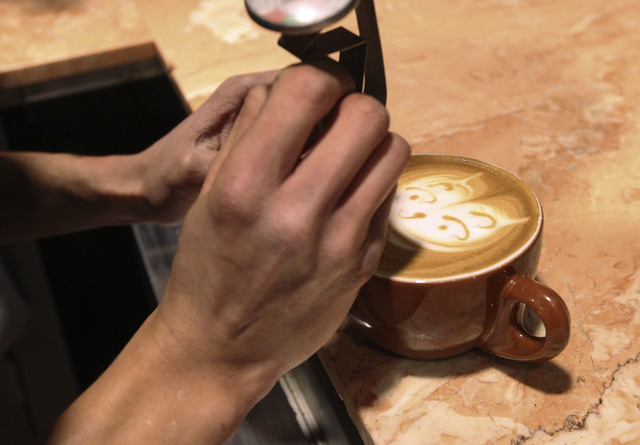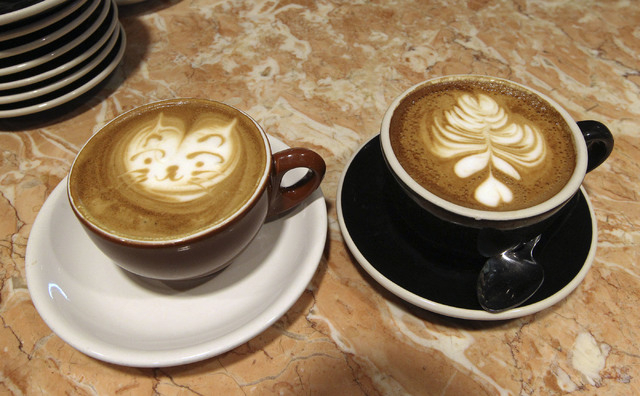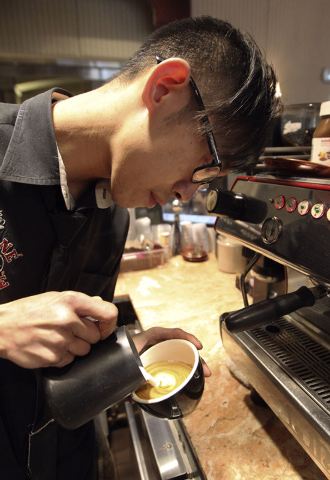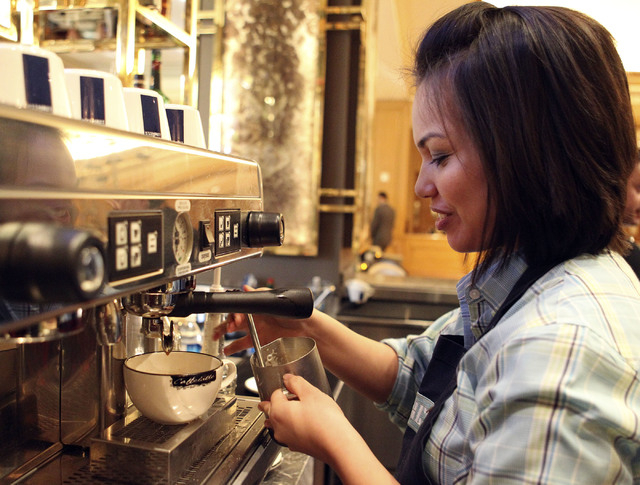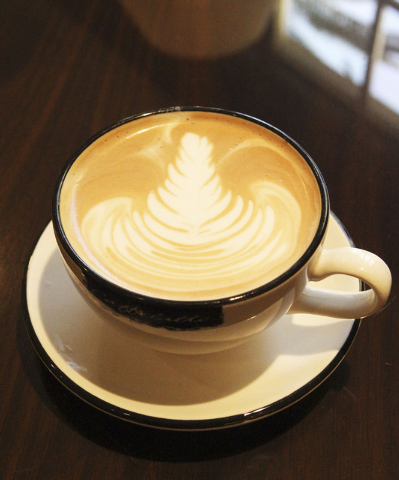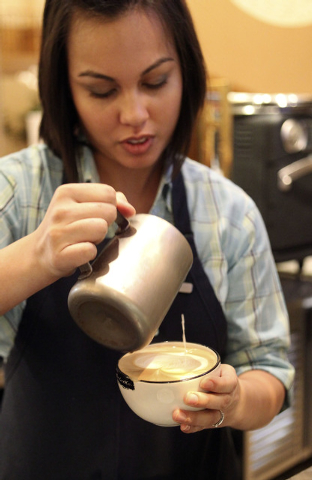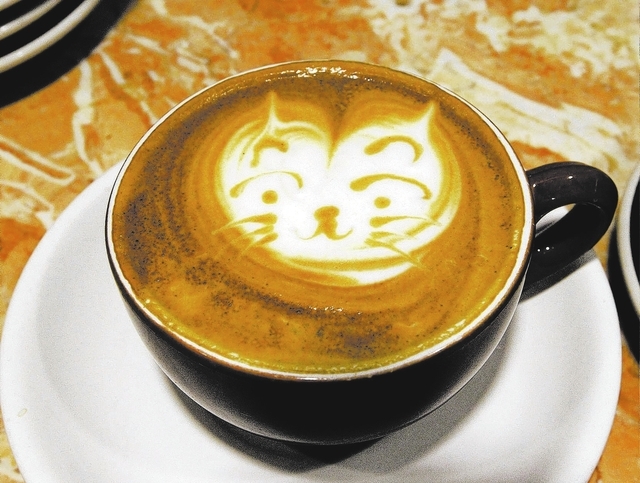Crafty baristas please customers with arty lattes
The days of only four coffee options — black, cream, sugar or cream and sugar — are long gone, as we all know. Today, you can get a coffee drink with so many options it’s impossible to list them all.
But here’s something you might not know, unless you’re a latte drinker: The art of coffee has progressed to the point where it involves actual art. Depending on the coffee house you frequent (or infrequent), you may order a latte only to find it topped with such designs as a heart, tulip or, during the holidays, a pumpkin or Santa.
They require skill, practice and finesse, which means that even the best step-by-step photos or description won’t likely help you create your own. Then again, this is something you really can’t try at home because it requires a barista-grade espresso machine and barista training.
“You have to have a good machine and steamer — a powerful one,” said Wendy Larson, a barista at Press at the Four Seasons, who’s been creating latte art for about two years and whose instrument is a Lavazza Blue machine. “You have to know how to make the coffee correctly, how to foam the milk correctly.”
If you see a person creating latte art, “that person knows what she’s doing,” Larson said.
At Press, Larson is the only barista who’s perfected the art, and it’s generally done by request at nonpeak times. But at Sambalatte Caffe Lounge &Espresso Bar at Boca Park, all of the baristas have been trained to do it, and every cup of latte served comes complete with latte art. Sambalatte owner Luiz C. Oliveira said the training takes six months.
Mason Salisbury, Sambalatte’s technista — which means he’s a barista who’s been trained to deal with the technical aspects of the machines — has been creating latte art for four years, competed in a national latte art competition in Chicago and can even create latte art behind his back if he’s just fooling around.
There are two ways to create it, and Salisbury is a purist.
“Free pour is the real way to do it,” he said.
Demonstrating, he goes to Sambalatte’s Marzocco Strada, which Oliveira calls “the Ferrari of coffee machines.” Salisbury removes from the machine the part that holds the coffee grounds, filling it and tamping it and sweeping away stray grounds. He pulls the shot of espresso.
He also steams milk — organic whole milk works the best, he said, because the higher fat content makes for a creamier microfoam — in a pitcher with straight sides, which is important, he said. Then Salisbury moves the pitcher over the espresso cup, and like magic, the design gradually appears.
Salisbury said the technique is as much about creating a quality cup of latte as it is about creating a pretty one.
One thing: The microfoam is critical.
“It kind of has to be velvety,” Larson said.
Pouring technique is both important and personal.
“It’s high and slow, and then aggressive and low,” she said.
“Very softly,” Salisbury said, with problems occurring “when people try too hard and overthink it.”
At Leone Cafe at Tivoli Village, barista Lawrence Chung has been creating latte art since 2003. While Larson is self-taught and Salisbury initially was taught by another barista, Chung said he learned the art in Hong Kong, where it was introduced by baristas from Australia. Oliveira said it originated in Italy, reaching the coffee capital Seattle in the ’80s.
“Right now, lots of people do it,” Chung said.
Like Larson and Salisbury, he usually does a heart, tulip or rosetta (rosette).
“The basics are from that design; sometimes we will create something different,” he said.
At Leone, he said, all of the baristas are trained to do it, and every latte has one, with a few exceptions.
“Some customers don’t like the foam, just the plain coffee with hot milk,” he said. “Then we can’t do it.”
And they sometimes use the etching technique in addition to the free pour.
“Sometimes when we make a picture — a cartoon or an animal — we will use some tools to do it,” he said.
Becky Reeves, a manager at Sunrise Coffee on Sunset Road, also is self-taught; her designs include rosettas, swans, an Indian chief, double rosettas and triple rosettas.
“I can’t do tulips, but most of my co-workers can,” Reeves said.
She occasionally will employ the etching technique.
“Sometimes, if you’re making a swan, and you want to make eyes or the details in some parts of it,” she said. “Usually you don’t have to.”
She also is self-taught, and said she wanted to learn it as a way to set the shop apart from many of its competitors. She can create latte art using almond milk and 2 percent milk as well as whole milk, but not soy or rice milk, she said.
“A small latte with whole milk is the best,” Reeves said.
“I just wish it was more common,” Larson said. “There’s only so many places you can go that can give you that.”
Contact reporter Heidi Knapp Rinella at hrinella@reviewjournal.com or 702-383-0474.



